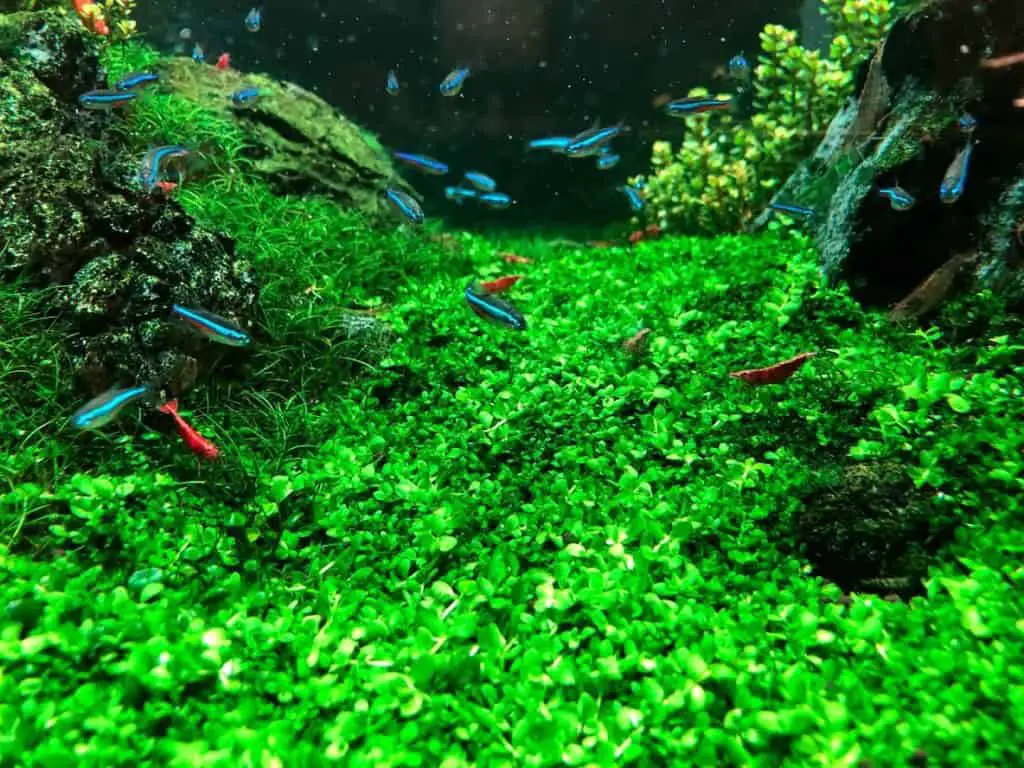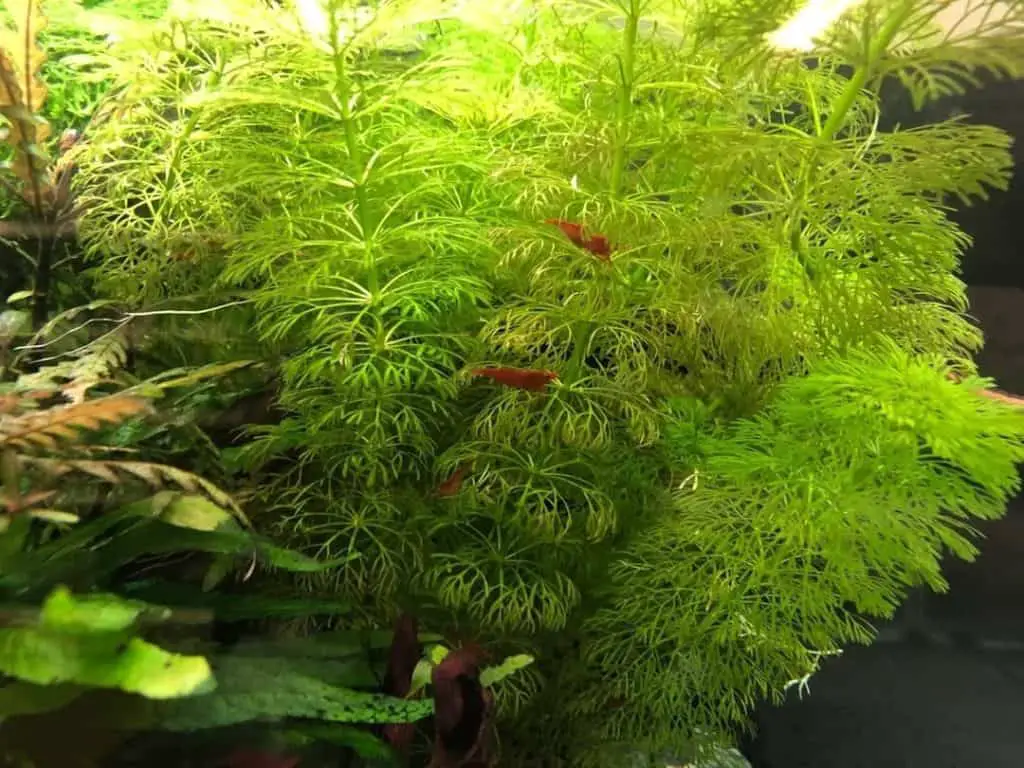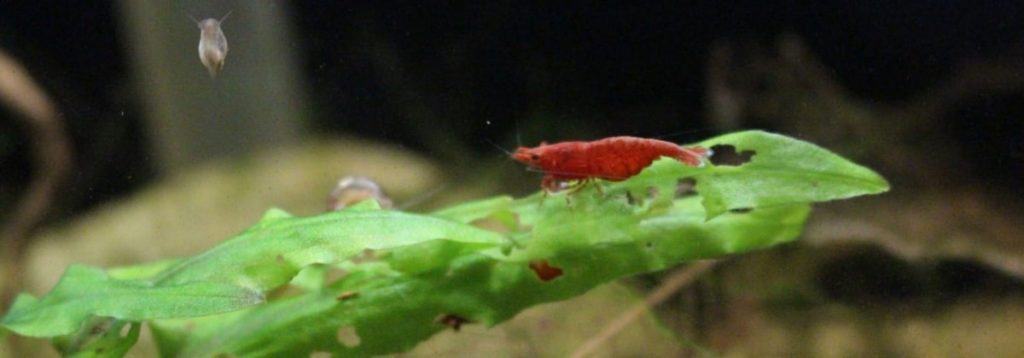In ‘Mastering Cherry Shrimp Care: Secrets Unveiled,’ we delve into the intricacies of nurturing Neocaridina davidi, a species esteemed for its simplicity in care and its vibrancy to aquatic environments.
This comprehensive guide is crafted to assist those dedicated to the service and well-being of these captivating invertebrates. It offers a deep dive into the essential aspects of cherry shrimp husbandry, from establishing the proper habitat to understanding the critical parameters that ensure their health and vitality.
By equipping caretakers with detailed knowledge of diet, social structure, and breeding techniques, we aim to foster an atmosphere of expertise and compassion within the aquarist community.
Join us in unraveling the refined practices that can lead to a flourishing cherry shrimp colony and the satisfaction of mastery in this specialized field.
Key Takeaways
- Cherry shrimp are popular freshwater invertebrates in the aquarium community, known for their high breeding potential.
- Selective breeding has resulted in more consistent red colors in captive Cherry shrimp.
- Cherry shrimp require stable water conditions with a temperature between 65 and 85 degrees Fahrenheit and a pH of 6.5 and 8.
- Tank setup should include plenty of plants for hiding places and organic material, such as driftwood and Java Moss.
Cherry Shrimp Origins
Cherry shrimp, Neocaridina davidi, are indigenous to the freshwater streams of Taiwan and have become a favored species among aquarium enthusiasts worldwide.
Their care requires attentiveness to their dietary needs, which includes a balance of plant matter and protein. A Cherry shrimp diet typically comprises high-quality pellets and blanched vegetables, ensuring these invertebrates receive the nutrients necessary for vibrant coloration and robust health.
Additionally, Cherry shrimp breeding techniques are integral to maintaining their population in captivity. These methods involve creating a stress-free environment with optimal water quality and providing a protein-rich diet to encourage reproductive behaviors.
Successful breeding results from understanding and catering to their natural lifecycle, which fosters a thriving aquarium community dedicated to the well-being of Cherry shrimp.

Color Grades Explained
Understanding the nuances of coloration is essential when grading Cherry shrimp, as it reflects their health and breeding quality. Cherry shrimp color grading is critical for enthusiasts who strive to provide the utmost care for these delicate invertebrates.
The grading scale ranges from the deep, vivid reds of High Grade to the paler hues of Lowest Grade. Mastery of Cherry shrimp breeding techniques plays a prominent role in achieving desired color intensity, with higher grades necessitating meticulous attention to water conditions and tank environment.
As caretakers, it is our duty to maintain a stable, stress-free habitat that enables these shrimp to showcase their richest colors, indicative of robust vitality and premium breeding stock.
Essential Water Parameters
Maintaining optimal water parameters is crucial for the health and coloration of Cherry shrimp in an aquarium setting. To ensure your Cherry shrimp flourish, you must diligently monitor and adjust the water conditions to cater to their needs.
Here are the essential water parameters that must be consistently managed:
- Ideal Temperature: Keep the aquarium water between 65 and 80 degrees Fahrenheit to provide a comfortable environment.
- pH Levels: The water should have a pH level from 6.5 to 8, ensuring it is neither too acidic nor too alkaline.
- Stability: Avoid sudden changes in water parameters, as these can stress and harm your aquatic charges.

Ideal Tank Setup
An optimal aquarium environment for Cherry shrimp includes a well-planted, spacious tank with stable water conditions and minimal current. A thoughtful selection of tank decorations is imperative to create a sanctuary that both nurtures and showcases these vibrant creatures. Aquarists should prioritize natural elements that mirror the shrimp’s native habitat, such as varied foliage and shelters. These additions enhance the tank’s aesthetic appeal and provide essential hiding spots for the shrimp, reducing stress and fostering a sense of security.
Integral to the tank’s ecosystem is a water filtration system that is efficient yet gentle, ensuring the removal of harmful substances while preserving the tank’s tranquility. Such a system will maintain the pristine conditions that Cherry shrimp require for optimal health and vivid coloration without creating disruptive water flow.
Nutritional Needs
The dietary requirements of Cherry shrimp are crucial to their color vibrancy and overall health, necessitating a balanced blend of plant-based and protein-rich foods. To cater to the Cherry shrimp diet and meet their feeding requirements, one must ensure a variety of nutrients are provided.
Here is a concise list to guide your care:
- Varied Diet: Incorporate a mix of algae, blanched vegetables, and specially formulated shrimp pellets to provide a well-rounded diet.
- Protein Intake: Offer occasional servings of high-protein foods like brine shrimp or bloodworms to support growth and breeding.
- Feeding Frequency: Feed small amounts once or twice a day, removing any uneaten food promptly to maintain water quality and prevent overfeeding.
Safe Tank Companions
Selecting appropriate tank mates is essential for the well-being of Cherry shrimp, as they can be vulnerable to predation by larger, aggressive fish. When determining Cherry shrimp compatibility, tank mate selection revolves around choosing non-predatory species with similar water parameter requirements.
Ideal companions include other peaceful invertebrates and small, non-aggressive fish. Amano, ghost shrimp, and small schooling fish like tetras are often well-suited. Additionally, bottom dwellers such as Corydoras catfish can coexist with Cherry shrimp without posing a threat.
It’s paramount to avoid species known for nipping or hunting small invertebrates. By carefully considering tank mates, aquarists can ensure a harmonious environment that allows Cherry shrimp to thrive and confidently exhibit their radiant colors.

Breeding Cherry Shrimp
Breeding cherry shrimp successfully requires precise water conditions and a well-prepared tank environment to encourage reproduction. To serve your shrimps’ needs and maximize breeding success, consider the following cherry shrimp breeding techniques:
- Maintain Optimal Water Quality: Ensure the tank water has a stable pH between 6.5 and 8, with temperatures ranging from 65 to 85 degrees Fahrenheit. Regularly monitor for harmful substances such as ammonia and nitrites.
- Provide a Nutritious Diet: Offer a variety of high-protein foods to promote health and fecundity in your shrimp, particularly when preparing them for breeding.
- Create a Conducive Environment: To reduce stress and encourage natural breeding behaviors, the tank should mimic its natural habitat, with plenty of hiding spaces and live plants.
Health and Stress Management
Stress reduction is pivotal in managing Cherry shrimp’s health, as it directly influences their color vibrancy and immune response. Cherry shrimp, stress management techniques, involve creating a serene environment akin to their natural habitat, which fosters their well-being and serves as a preventive measure against common health issues in cherry shrimp. It is our duty to ensure their world within our tanks mirrors the tranquility of a natural brook. Here are heartfelt interventions to support their health:
| Stressor | Emotional Impact | Mitigation Technique |
|---|---|---|
| Poor water quality | Anxiety | Regular water testing and changes |
| Overcrowding | Discomfort | Adequate space per shrimp |
| Aggressive tank mates | Fear | Peaceful companionship selection |
| Inadequate diet | Malnutrition | Balanced, varied nutrition |
Frequently Asked Questions
Conclusion
In conclusion, the successful care of Neocaridina davidi requires attentiveness to various factors. These factors include water quality, diet, and habitat complexity. By adhering to established guidelines for color grading, tank conditions, and breeding practices, enthusiasts can foster a vibrant and healthy cherry shrimp population.
Additionally, awareness of potential stressors and appropriate tank mates further ensures a stable environment. With mastery in cherry shrimp care, enthusiasts can contribute to advancing the aquarium hobby and preserving these captivating invertebrates.
